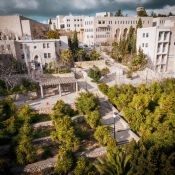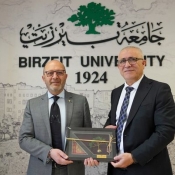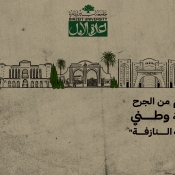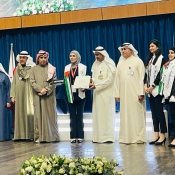Pioneer Architect “Al Hasan” shares his journey
Palestinian architect Hani Al Hasan was invited on March 21, 2017 by the Architectural Engineering Department to share his professional journey in architecture.
Al Hasan told students that they should always seek out and then cross new frontiers of knowledge, explaining that each architectural project has its own characteristics and features that require theoretical and practical knowledge. He encouraged the students to embrace modern patterns in design in order to distinguish themselves from others.
“An architect should cope with the environment that he/she lives in, and should be prepared for the challenges he might face, especially in crowded spaces and cities. Practical solutions are needed,” he emphasized.
Commenting on winning the European Center and the Chicago Atheneum 2010 International Architecture Award, Al Hassan said that the prize was awarded for his energy-efficient Desert House in Jericho. The design was based on local recycled stone collected from quarries to be used in walls, light transmission for total shade, and low heat absorption material for the pool deck. The comfortable temperature was achieved through wind chimneys that were located between partitions for passive cooling and to take advantage of cross ventilation and thermal mass.
Hani Hassan Architects is an architectural firm founded in Bogota Colombia in 1985 and established in Ramallah, Palestine in 1997 by Hani Hassan, a passionate and committed architect who leads a group of talented architects and engineers, and has emerged as a major player in the Palestinian architecture scene, considered today one of the best architects in his country with extensive experience. Hassan decided to design this house to be built on his own land located in Jericho in the Jordan Valley, Palestine, while implementing bioclimatic strategies in his design to achieve the maximum comfort and energy savings possible. As an architect with concerns about global warming, Hassan carried out research before designing this long-term total shading architecture. He expects it will push his work on future projects to greater creativity, especially in desert regions, calling it the future of architecture.






